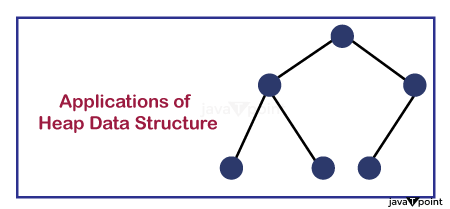Application of heap treeIntroductionBinary heaps, in particular, are essential data structures that are used extensively in computer science and information technology. These structures offer a productive way to arrange and manipulate data, enabling quick access to components according to their values or priorities. The development of priority queues is just one of their many useful applications. When activities or processes must be carried out in ascending priority, priority queues are essential. The heap's inherent structure enables constant-time extraction of the highest-priority element. In many optimization-focused methods, heap trees are essential. In network routing and graph analysis, Dijkstra's Shortest Path Algorithm uses heap structures to extract the least possible tentative distances between nodes efficiently. Similarly, Heap Sort, a sorting algorithm, uses heap trees to generate an in-place sorting mechanism with an O(n log n) time complexity. As a result, heap trees are a fundamental part of algorithms that call for effective data rearrangement. 
Priority QueuesImplementing priority queues is one of the main uses of heap trees. When elements are given priority, priority queues are crucial. The heap structure guarantees constant-time extraction of the element with the highest priority. This is very helpful in task scheduling because tasks are carried out by their priority levels. Dijkstra's Shortest Path AlgorithmIn particular, Dijkstra's Shortest Path Algorithm relies heavily on heap trees to function. This approach depends on effectively extracting the node with the minimum tentative distance throughout each iteration to determine the shortest pathways between nodes in a graph. The efficiency of the technique is optimized by heap structures, which make it quick to identify the node with the shortest distance. Heap SortThe Heap Sort approach, a comparison-based sorting method with an O(n log n) time complexity, is built on heap trees. In Heap Sort, the input array is used to build the heap, and elements are continuously removedand added to the array's sorted section. Due to its effectiveness in numerous applications, this in-place sorting method is extensively used. Memory ControlSystems for managing memory use heap trees extensively. Heap structures efficiently maintain track of free memory blocks during allocation and deallocation. Operating systems use heap trees to allocate memory and dynamically guarantee the best use of resources. Job SchedulingHeap trees are useful in job scheduling situations where tasks or jobs must be carried out according to predetermined criteria, such as processing time or priority. The heap optimizes the scheduling process by enabling effective job organization and retrieval. Graph algorithms (Kruskal's and Prim's)Heap trees are used in graph algorithms like Prim's & Kruskal's, which determine the lowest-spanning trees in a graph. Heap structures make it easier to efficiently extract edges with low weights, which aids in the optimization of these techniques. Huffman CodingHeap trees are used in data compression, especially Huffman coding, to generate variable-length codes for characters dependent on their frequency. The total compression and decompression procedures are optimized by giving shorter codes to characters with lower frequency. Data CompressionIn addition to Huffman coding, heap trees are used in several different data compression and encoding schemes. They play a key role in reducing storage requirements and improving data transmission effectiveness because to their capacity to effectively maintain and alter data structures. Operating System SchedulingOperating systems use heap trees to schedule processes. The heap's structure makes it possible to identify and carry out operations with the highest priority quickly. This is essential for improving system efficiency and resource use. Event-Driven SimulationHeap trees are essential in event-driven simulations, where events are planned to happen at precise times. They increase the effectiveness of simulations in various fields, such as computer networks, manufacturing procedures, and scientific research, by making it possible to retrieve the following scheduled event quickly. ConclusionThe widespread use and adaptability of heap trees highlight how important they are in the world of computer science and information technology. Thanks to their ordered structure, heap trees answer a wide range of computing problems, from priority-driven activities to algorithmic optimizations. Heap trees are essential for resource management in operating systems, where their quick identification and execution of high-priority tasks improves the system's effectiveness as a whole. Rapid event retrieval is essential for accurately and timely modelling complex systems in event-driven simulations. Additionally, the use of heap trees in data compression, as demonstrated by Huffman coding, emphasizes the significance of these structures in addressing practical issues with storage and transmission efficiency. Heap trees remain a pillar in the arsenal of algorithms and data structures as technology advances and the need for resource management and efficient computation increases. Understanding how they are used makes it easier to create optimized solutions and helps one appreciate the beauty and efficiency of these fundamental structures on a deeper level.
Next TopicConstruct a linked list from 2D matrix
|
 For Videos Join Our Youtube Channel: Join Now
For Videos Join Our Youtube Channel: Join Now
Feedback
- Send your Feedback to [email protected]
Help Others, Please Share









